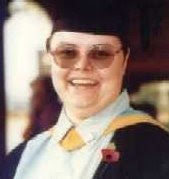Happy Birthday Kenneth Grahame
Kenneth Grahame was born in Edinburgh, Scotland on March 8, 1859. He is best known today for the children's book The Wind in the Willows which he published in 1908, but in 1895 he published two books of stories about children: The Golden Age (1895) and Dream Days (1898), which were very popular in England and in the United States. However, when he wrote The Wind in the
Willows, many publishers turned it down because they found the idea of talking animals too fantastic. In the early 20th century, Victorian educators and child welfare experts believed that children should be discouraged as early as possible from pretending and daydreaming, and that letting children believe in fairy tales and myths was detrimental to their development. Grahame believed quite the opposite: he believed that because of their imaginations,
children were the only really living people. It was Teddy Roosevelt, who was a huge fan of Grahame's early work, who convinced a publisher to take on The Wind in the Willows. It became such a success that Grahame was able to retire from the Bank of England and move to the country. He lived for another twenty-five years, but he never wrote another book.
I remember that I had a copy of The Wind in the Willows as a child, but for some reason (that at this distance of time I cannot remember) I wasn't allowed to read it immediately; however, I managed to get hold of a copy of A A Milne's Toad of Toad Hall to read instead, and I remember my Dad being quite cross with me ! It has to be said, though, that I enjoyed The Wind in the Willows far better than Toad of Toad Hall. A few years ago I read William Horwood's sequels: The Willows in Winter, Toad Triumphant and The Willows at Christmas. Initially I was reluctant as I'd previously found sequels by other hands to be far less enjoyable than the orignal novels, however, I had enjoyed several of Horwood's other novels, so I decided to give him the benefit of the doubt and I enjoyed them. I liked Patrick Benson's illustrations too - Shephard's illustrations always irritated me a little when I was a child because I felt the different animals should be differing heights, not all the same height (strange the things one picks up on as a child !)
* * * * * *
I'm currently reading Cervantes' Don Quixote - I've been meaning to read it for a while, and then just lately it's been mentioned or referenced more than once - including by Giles in Buffy's season 7 when he says "Windmills" in response to Buffy's plan to go back to the vineyward where Caleb is holed up to find whatever Caleb is guarding ("Empty Places"), so I decided to take the hint and borrowed it from the library to read - after all, when hints start to become anvil-sized they also become harder to ignore !


4 comments:
Very interesting about your observation as a child, Michele!
What, about the illustrations by Shephard ? I blame it on all those Encyclopaedias I read as a child - they made me far too observant ! :-D
Yes, about the illustrations. I'm trying to think if I would have noticed that or not. I wasn't a huge fan of "The Wind in the Willows," though (at least as a child. I appreciate it now.) I had a prejudice against talking animals from an early age. Wrongly, I must add!
I've never been a huge fan of WitW - I think I've read it about 4 times in my lifetime, but even as a child I knew that badgers were bigger than moles, and moles were bigger rats, with toads somewhere between the rats and moles !
I've always been quite happy to read about talking animals: whether in The Wind in the Willows, Watership Down, The Animals of Farthing Wood, Mrs Frisby and the Rats of NIMH (I picked up a second hand copy of the latter last week), or somewhere else entirely - at the moment I can't think of any more talking animal titles that I read as a child.
Post a Comment